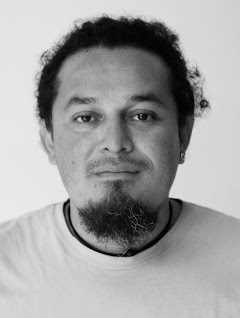Beat
I normally cover poverty and violence.
One Shot

“I like this picture of a gang member reflected in a piece of mirror because of his expression as - in the moment I took the picture - he was inspecting his new haircut. What caught my attention was how in the Quezaltepeque jail, they use pieces of mirror to see themselves, and they don't have any belongings.”
Profile
My first memory of photography is the time my step dad brought home a pocket camera with 12 frames. We all went to the park and he took a family picture of my mum, brother and me. I thought it was magical that you could freeze time and capture an instant forever; I fell in love with photography that very moment.
I must have been ten years old, when I saw a foreign photographer - obviously lost - wandering around downtown San Salvador. It was the 80s, in the middle of the civil war. I started talking to him and he told me he was a freelance photographer from the States. I asked what it took to become a photographer like him, and he told me to study journalism or photojournalism. Years afterwards, I found out that this man who had inspired my studies was John Hoagland, a war photographer who was killed by a Salvadoran soldier in 1984.
I followed John Hoagland’s advice when I got older, and enrolled in university to study journalism, but I had to drop out after the third year: my family had stopped paying for my tuition and I needed to get a job. Shortly afterwards I got a job as an intern, without pay, at a unionised newspaper, where the owners had gone bankrupt and the employees had taken over. It was a very poor newspaper but they gave me a camera, a 50mm lens, a flash and a roll of black and white Fomapan film with 12 shots.
For my first assignment, I went to cover a protest outside a bank, where the director had embezzled money. It was a story without pain or glory, but my editor was interested in it and sent me to take pictures. The only thing I came up with was a photograph of the logo of the bank on a glass door that also showed the reflections of the protesters. This photograph became my first cover. And I learned that light is everything.
The assignment that left the biggest mark on me was when I travelled with Central American migrants on their quest to reach the United States. I went with them from Tecun-Human, across the whole of Mexico, to el Rio Bravo. I saw the terrible treatment they receive from pretty much everyone and the horrible things they have to go through on this very long journey. I could not, and still cannot, understand why people leave everything behind.
I like stories that show the infinite capacity of human beings to exist in the most adverse environments – and which show their dignity despite everything.
The people I respect the most are the excluded and forgotten ones, the ones that have no voice.
